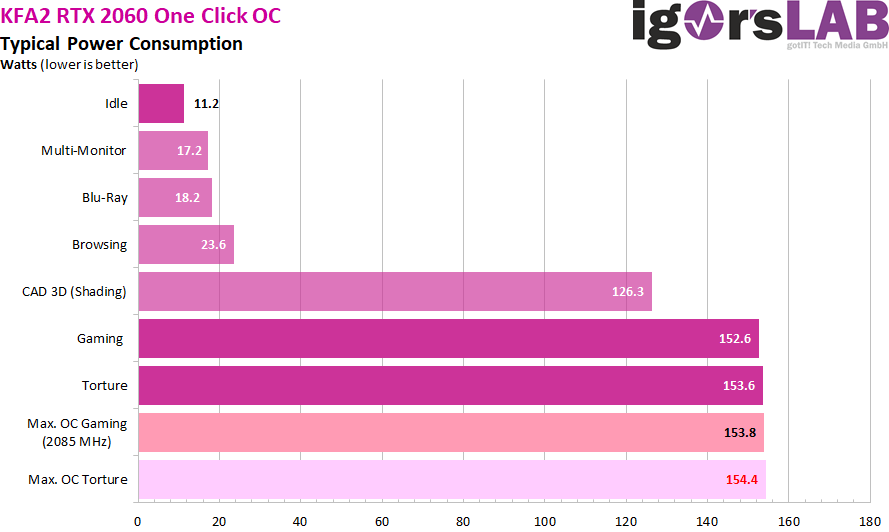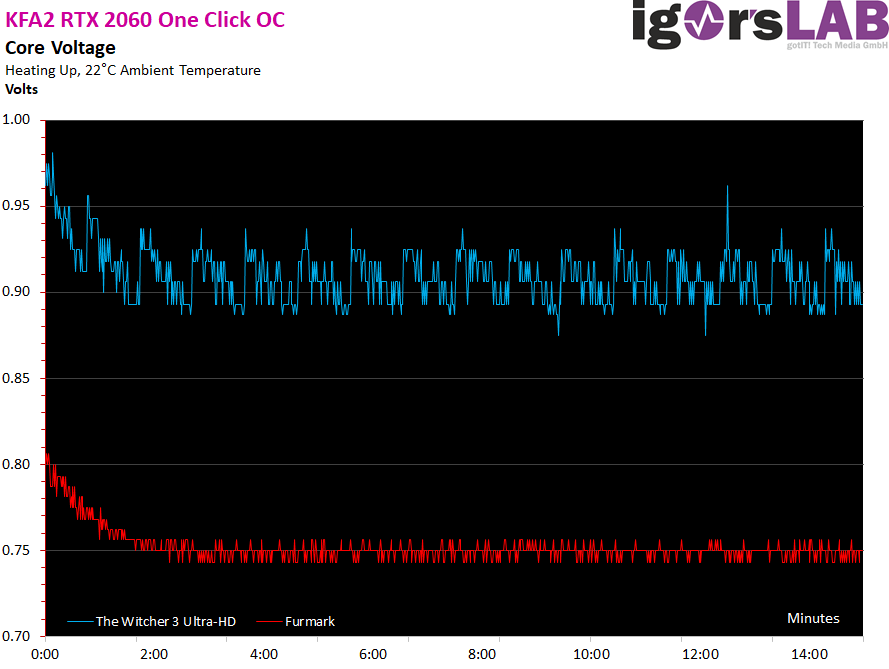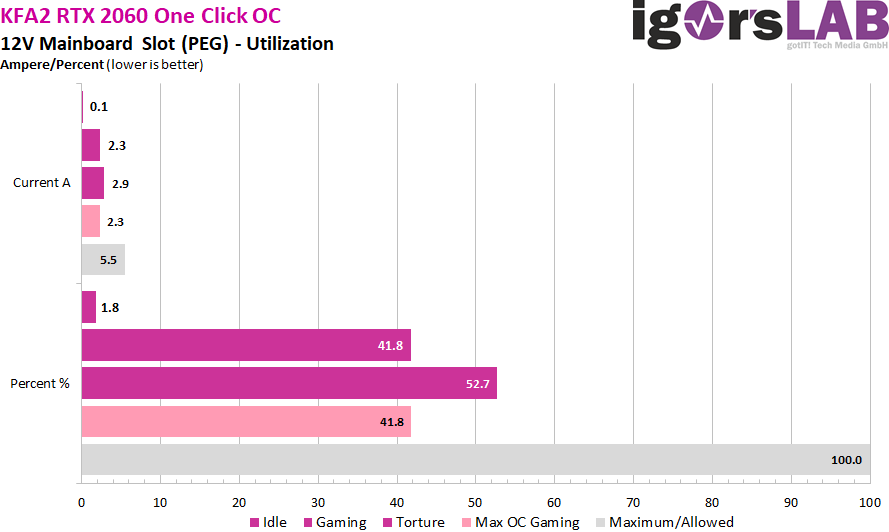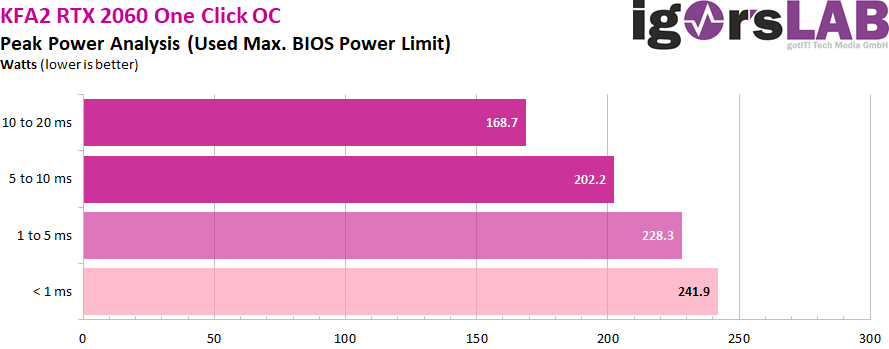Power consumption and loads
The power consumption of this card is in full trend with a good 11 watts in the idle. For gaming and in the torture loop, the card is available at approx. 153 watts to 154 watts just below the power target specified in the BIOS ex works. This is 160 watts and due to the restrictions the manufacturer must not exceed this value, so that the absolute power limit is also only 160 watts. We had just admired the episode at the “OC”.

Here again a short excerpt from what KFA2 had to give this card in the firmware at limits. Nvidia sets this design specifications to this maximum value of 160 watts for all 6-layer RTX-2060 boards with conventional MOSFET placement.

The voltages are in the expected, rather low range, wherein in the end the permissible board power was the limiting factor, not the voltage. One notices very clearly that Nvidia deliberately limits here before a possible maximum is reached.

The load distribution on the rails is scarce, but in accordance with the standards, because the maximum 5.5 amperes of the motherboard slot are never exceeded. However, the limitation to 4 instead of 6 possible phases already results in a slight shift towards PEG.

Power supply design and peak loads/currents
As I have already demonstrated in detail in my basic article “The fight of graphics card against power supply – power consumption and load peaks demystified”, there are also temporarily higher loads in the millisecond range, which are unfavorable in case of unfavorable designed or improperly equipped power supplies can already lead to unexplained shutdowns. The TBP (Typical Board Power) measured by the graphics card manufacturer or the reviewers does not really help for a stable design of the system.

Peaks with intervals between 1 and 10 ms can lead to shutdowns with very fast-reacting protective circuits (OPP, OCP), especially for multi-rail power supplies, although the average power consumption is still in the norm. For the KFA2 RTX 2060 1-Click OC I would therefore calculate with a maximum of 200 watts to have enough reserves in case of a case. A short excerpt with high resolution now shows us the 20 ms measurements (10 S intervals), how I run them automatically for valuation:
Detailed recording of average power consumption and flowing currents
As usual, I now also set aside the power consumption and the flowing currents as detailed graphics of my oscillograph measurements. A service that hardly anyone else offers and which shows how the maps “tick” in detail:











































Kommentieren